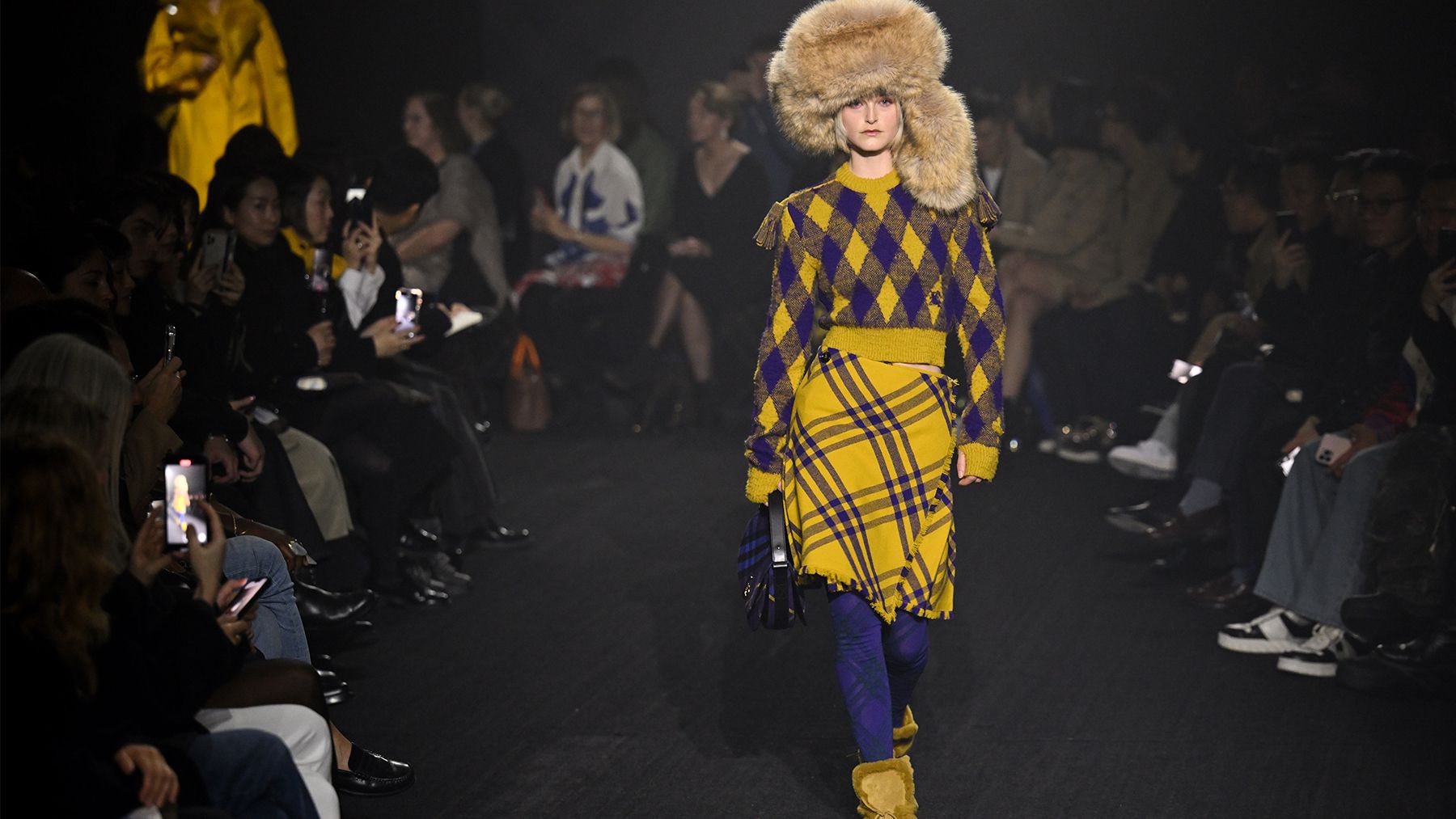
LONDON — “Dialing up on Britishness,” Burberry’s rallying cry as it attempts to carve itself a more resonant niche in the battle of the big-time brands, would appear to lend itself to the naturally abrasive instincts of its latest standard bearer. Daniel Lee turned Bottega Veneta around with a stark, confrontational aesthetic that lit a fire under the house. Burberry’s new CEO Jonathan Akeroyd is clearly hoping he’ll work the same dark magic here. And why not? What is “Britishness” now but a populist breaking down of decency and dignity and common sense, presided over by the decadence of a ruling party which gleefully plugs the Tory into “predatory?” Perfect fodder for a beady-eyed insurrectionist like Danny “The Red” Lee.
Well, that’s not what happened on Monday night. The show’s purpose-built venue was mere steps from the Oval, home of cricket, which centuries-old tradition dictates is the national sport. And the almost-cosy reassurance of tradition weighed heavy on Lee’s debut collection for Burberry. Post-show, he lavished praise on the brand’s archivist, who compiled for him references to fabrics and accessories from the past. Some of those fabrics from old English mills were a century old. Cut into a languid 1920′s-style tea-dress or a floating chiffon tent, they looked practically primed for a weekend party in a country house in a faraway time and place.
Lee celebrated Burberry’s foundational outdoors-iness in a decoy duck print, in the substantial wellies, in the dangling (faux) fox tails, in the fishing lures (they were actually fake feathers, i.e. fishing lures) that adorned a lustrous blue caftan. And hardy plaids and trench coats, of course. All of that “very British” in Lee’s eyes, because he saw the essence of the brand as “functionality.” One of Akeroyd’s major directives is to activate accessories. That’s Lee’s big challenge, because Burberry has never really had such a narrative. So he showed bags which, in their un-precious bulk, were designed, in his words, to be chucked on the floor. And that’s the kind of function that speaks to a world choking on frou-frou.
At the same time, Lee emphasised another kind of Britishness in the heraldic references: the Burberry knight galloping across an asymmetric T-shirt dress, the cluster of tassels on the shoulders of a sweater, the flurry of rooster feathers on a turtleneck and, most of all, the classic English Rose, the motif which he chose to dominate his debut. “A Rose Isn’t Always…Red” announced a T-shirt which sported said flower in the shade of blue which Lee has chosen to represent his Burberry, in the same way that his Bottega was illuminated by a vivid green. And all of this harked back to the “almost-cosy reassurance of tradition” I mentioned. I think Daniel Lee is a supreme ironist, an arch discombobulator, an expert at subverting the familiar. You could see it in the way he tipped Burberry’s signature plaid sideways. Or showed those roses in such peculiarly noir colours (I mean, brown is not my primary rose shade). One model, carrying a hot-water bottle and swathed in a velvet bathrobe rose-printed in dun shades of mustard and brown, could have stepped straight out of a British kitchen-sink drama of the 1950s, bar the luxurious flourish of leather-trimmed hems, and the eccentricity of the fur-trimmed mules.
My curiosity was equally sparked by the footwear. Clarks is a fine old English shoe brand, founded in 1825, three decades before Thomas Burberry launched his company. In 1967, Clarks launched a mutant moccasin called the Wallabee. It became the chosen footwear of numerous youth cults, and Patrick Cox’s mutation of the mutation went on to rule later youth cults as the Wannabe. In other words, a style which lends itself to re-interpretation. Lee showed his own huge-tongued, shearling-trimmed version. It all but screeched 2023 must-have. Which could mean mission accomplished for Lee’s paymasters.
So, back to “Britishness” in an era when “being British” engenders at best a sympathetic response from the rest of the world. Lee insisted that he wanted his Burberry to celebrate everything great about his Britain: its Westwood-ian creativity, its diversity. His T-shirts spoke of “Winds of Change.” Change for him, change for the brand. He thought it was a funny little touch (the song of that name by the stentorian Scorpions became the anthem of the Berlin Wall’s collapse). But Lee’s choice of William Bevan, the genius who records as Burial, for his soundtrack was closer to the bone. Just as the worn-out crackle of the sounds Burial makes is closer to the dystopian truth of “Britishness” today.


